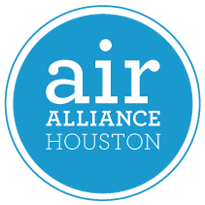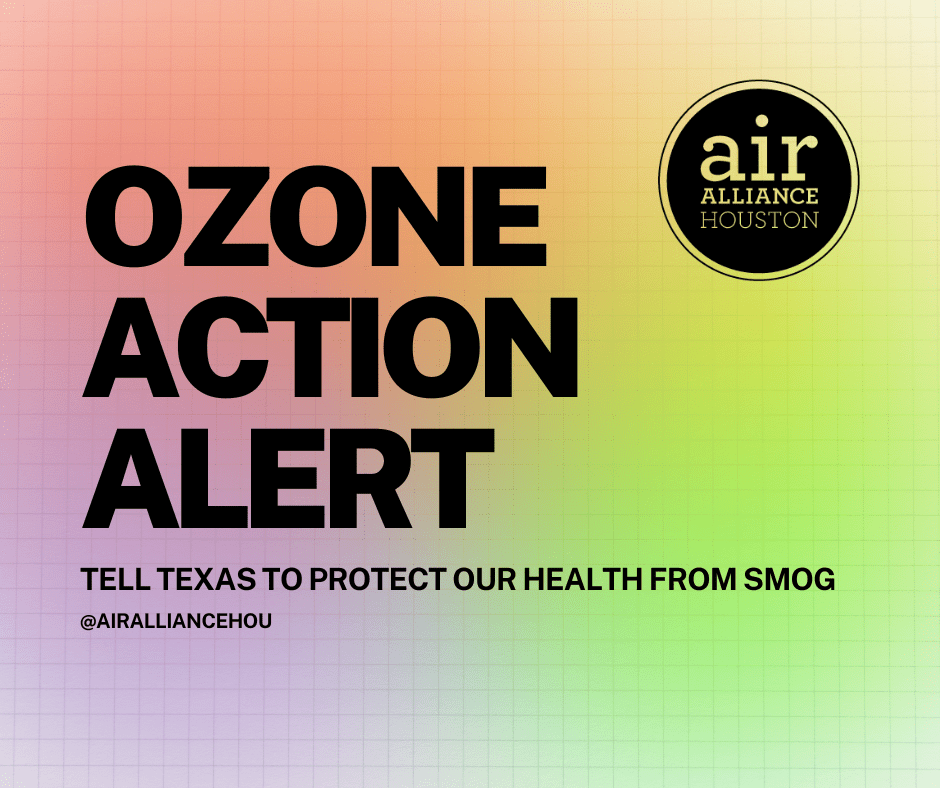Last year, thanks to the over 200 community members and allies that sent in comments, the U.S. Environmental Protection Agency (EPA) stepped in and downgraded the Houston region to ‘severe nonattainment’ of the federal health-based ozone standards in the Clean Air Act forcing a response from the state.
Now the Texas Commission on Environmental Quality (TCEQ) is required to create a State Implementation Plan (SIP) detailing how it will improve ozone air quality in our region and bring the Houston area back into attainment with the Clean Air Act.
TCEQ has revised their SIP again, which provides us an opportunity to submit comments and pressure the agency to implement more effective changes to the state plan that could help lessen ozone-forming pollution including at the industries that line the Houston Ship Channel, the W.A. Parish coal plant, and more.
With your help, we can collectively demand that TCEQ provide a SIP that meets federal standards to address ozone and improve air quality for all Texans.
HERE IS WHERE YOU COME IN
Submit your comments on the revised Houston area ozone SIP to the TCEQ by Tuesday, January 16, 2024 to tell them to implement a plan with the highest level of protection for air quality against smog and ozone.
What do I need to submit comments?
- Identity information: Comments can be submitted completely anonymously. Otherwise you can input your name, address and email information.
- Comment content: Below are some prepared comments (thanks to our friends at the Sierra Club) that you can copy and paste to send. Please keep in mind that it is always better to have a personal story regarding the issue (including health issues, environmental concerns, etc.) and we encourage you to add that story to your comments.
- You can read comments made to the TCEQ this past week by our Executive Director Jennifer Hadayia for inspiration!
Using a laptop or desktop? Watch this short walkthrough on how to submit your comments.
Using a cellphone? Watch this short walkthrough on how to submit your comments.
SAMPLE COMMENTS BEGIN HERE
I urge TCEQ to implement the most stringent possible plan to bring the Houston-Galveston-Brazoria (HGB) area back into attainment for ozone pollution in accordance with the 2008 National Ambient Air Quality Standards as required by the Clean Air Act.
In the HGB area, a group of large industrial plants, oil refineries, and chemical and petrochemical plants are the largest ozone-precursor sources and need to reduce both VOCs and NOx emissions in order to improve Houston’s are quality. NRG’s Parish coal plant in Fort Bend County is by far the #1 source of NOx pollution locally. ExxonMobil’s Baytown complex is the largest sources of VOC pollution.
A large part of the nonattainment problem in Texas is also related to increased temperatures, because the summers are getting hotter as the climate crisis is exasperated by continued reliance on fossil fuels and a failure to appropriately regulate polluting industries in general. A recent story from the Sierra Club identified that nearly half of the Texas population is consistently exposed to unsafe levels of ozone pollution. That’s nearly 15 million people that could be at risk. This is a public health crisis that we need TCEQ to address before it worsens.
In addition, a 2023 report published by the Environmental Integrity Project identified 6 Houston areas where residents were exposed to the highest levels of ozone in 2023 at 100 ppb (the 2008 standard is 75 ppb). It is also revealed that more than 90 percent of the residents in 4 of these areas are people of color, and that about 50 percent of these households are low income. Overall, their study shows that people of color and low income households in Houston are more likely to be exposed to ozone concentrations that are higher than the federal standard and the least likely to have been improved since these standards were set in 2008.
Texans are facing the very real and dangerous consequences of TCEQ’s failure to submit state plans that meet the federal requirements for NAAQS, so we expect you all to do your due diligence and provide the most stringent regulations with these revisions to the 2008 plan.
Thank you for your consideration.
Don’t forget to share this Action Alert with your networks using the buttons below!

